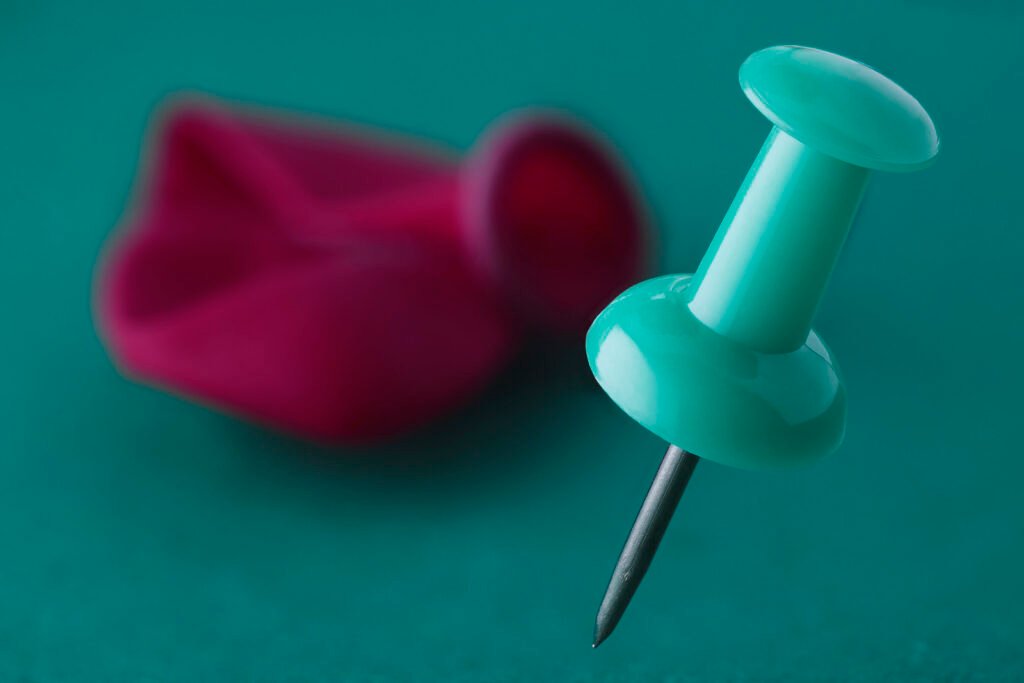A quartet of German powerhouses stands tall among car manufacturers: Audi, BMW, Mercedes and Porsche. Among lens makers, Leica, Rodenstock, Schneider and Zeiss have similar stature – but perhaps Leica above all embodies the purest ideals of Teutonic modernism most diligently executed – and valued accordingly by the market. However, only relatively recently have Leica lenses been Leica-branded. In the heyday of enlarger and projector lenses the company’s output was marked by its maker: ‘Leitz’, ‘Ernst Leitz’, or ‘LEITZ WETZLAR’. Leica Gmbh didn’t come into existence until 1986, although Leitz’ earliest enlargers (though not the optics) were referred to as ‘Leica’ product (combining LEItz and CAmera).
The company’s history is well enough documented not to require repetition. However, Leica’s range of projector lenses is worthy of more detailed treatment (found here), and too little has written about the company’s enlarger lens range.
Using enlarger lenses for capture is hardly a new idea. Indeed, it’s gratifying to come full-circle a century later, with digital capture devices, to Ernst Leitz’ original conception of a lens system that translates seamlessly between applications. In the early 1930’s the company’s ‘standard’ enlarger lens was the Elmar 50/3.5 taking lens. The M39 screw mount was designed to facilitate exactly such interoperability.
Names, Rank & Serial Numbers
From 1933 until the late 1950s Leitz used five-letter catalogue names for lenses and acessories such as mount adaptors and extension rings. Early lenses from this period (ie, ‘Varob, ‘Voort’, ‘Elmar’) are simply known by their catalogue reference, printed in upper/lower case.
With the introduction of the Focotar range in 1949, Leitz catalogue references appeared in upper-case letters. Lenses (such as DOOHF) and accessories like mount adaptors and extension rings (like DOORX) are prominently marked, leading to potential confusion when they are sold with accessories attached. It’s common to find a Focotar with an extension ring attached advertised as a ‘DOORX’ model.
In 1952, the Focotar 50mm f4.5 was available in DOOHF and DOOUM variants, but in 1954/5 it acquired the designation DOOCQ. In 1961, when Leitz moved from letters to catalogue numbers, the same lens received the reference 16781 – sometimes occuring with an ‘R’ suffix. Lens accessories then also received numeric identifiers: for instance, DOORX became 17675 and the VALOO aperture ring became 14160.
To aid identification, Delta labels successive generations of the same lens in the format: ‘Name [Vx]’. Square brackets indicate an addition by Delta not printed on the lens, or part if its factory designation. DOOHF is therefore listed as ‘Focotar 50/4.5 [V1]’. DOOCQ and 16781R (the same lens with a different factory reference) is listed as ‘Focotar 50/4.5 [V2]’, and 17581A is listed as ‘Focotar 50/4.5 [V3]’. However, Delta lists three quite different ‘Focotar two’ lenses: the late-1960s, five-element ‘Focotar 50/4.5 [V2]’ (NB: square brackets); the early 1970s six-element ‘Focotar-2 50/4.5’; and the late 1970s ‘Focotar II 100/5.6’. You may also need to read this paragraph x2.
Ernst Leitz deployed Leica branding on its enlargers (though not the optics) for many decades prior to the Wild Leitz Group becoming Leica Gmbh in 1986. All lenses produced after this date are marked Leica rather than Leitz or Ernst Leitz.
As a ready-reckoner for dating Leitz enlarger lenses without access to their serial numbers:
1. If it has a five-letter number in mixed case, it was made before 1952.
2. If it’s a 50mm Focotar, it’s post-1952. If it’s a 90mm Focotar, it’s post-1949.
3. If it says ‘Ernst Leitz’, it was made before 1958; if it says ‘LEITZ WETZLAR, it was made after 1958.
4. If it has a letter code (ie, DOOHF), it was made before the early 1960s.
5. If it’s a Focotar-2, or a Focotar II, it dates from 1974-1980
6. If it’s a 40mm, it’s post-1978
Please note that Leica often factory-repaired lenses, and there are in circulation a number of ‘bitza’ samples with early serials (dating from their original manufacture) and anachronistic components (for instance, front housings with later lettering styles). These are often identified by * markings at the end of the serial, or the absence of a serial number altogether.
| Year | Serial number | Markings |
| 1930 | Below 100000 | |
| 1931 | 106432-133506 | ‘Leitz’ / Mixed case model names (ie, Voort) |
| 1932 | 144221-151035 | |
| 1933 | 156501-190000 | |
| 1934 | 200001-235000 | |
| 1935 | 242001-265000 | |
| 1936 | 275001-345000 | |
| 1937 | 358001-400000 | |
| 1938 | 427001-480500 | |
| 1939 | 498001-538000 | |
| 1940 | 542001-550000 | |
| 1941 | 567101-575000 | |
| 1942 | 582301-592000 | |
| 1943 | 593501-594500 | |
| 1945 | 595000-600000 | |
| 1946 | 601001-633000 | |
| 1947 | 633101-643000 | |
| 1948 | 647001-675000 | |
| 1949 | 688001-750000 | |
| 1950 | 769001-836000 | |
| 1951 | 866001-950000 | |
| 1952 | 955001-1050000 | ‘Ernst Leitz’ / Upper case letter codes (ie, DOOGS) |
| 1953 | 1063001-1124000 | |
| 1954 | 1132001-1231000 | |
| 1955 | 1245001-1252000 | |
| 1956 | 1356001-1459000 | |
| 1957 | 1477601-1547000 | |
| 1958 | 1566001-1644000 | ‘LEITZ WETZLAR’ / Letter codes (ie, DOOCQ) |
| 1959 | 1673501-1712000 | |
| 1960 | 1734501-1817000 | |
| 1961 | 1840001-1913000 | ‘LEITZ WETZLAR’ / Number codes appear (ie, 16781) |
| 1962 | 1914001-1959000 | |
| 1963 | 1974001-1993000 | |
| 1964 | 2030001-2060500 | |
| 1965 | 2090801-2156300 | |
| 1967 | 2219201-2242000 | |
| 1968 | 2259901-2299950 | |
| 1969 | 2319001-2385700 | |
| 1974 | 2671451-2711350 | |
| 1975 | 2738451-2757650 | |
| 1976 | 2776351-2802400 | |
| 1977 | 2840801-2857600 | |
| 1978 | 2897401-2967250 | |
| 1979 | 2998001-3002100 | |
| 1980 | 3022751-3065800 | |
| 1981 | 3128001-3128500 | |
| 1984 | 3314701-3316700 | |
| 1986 | 3406701-3408700 | ‘LEICA’ branding |
| 1987 | 3442901-3444900 | |
| 1990 | 3516296-3518295 |
Leitz Enlarger Timeline
| Year | Model | Optional Lenses |
| 1933- | Leitz Valux | |
| 1933-1953 | Leitz Valoy | Elmar 50mm f3.5 (DOOGS) in 1953 |
| 1933- | Leitz Valfa | 75mm f4.5 |
| 1933- | Leitz Vakut | 75mm f4.5 |
| 1933- | Leitz Varyl | Elmar 90/4 |
| 1933- | Leitz Varax | Elmar 50/3.5 |
| 1933-1943 | Leitz Focomat I | |
| 1937-1949 | Leitz Focomat Ia | |
| 1946-1950 | Leitz Focomat Ib | |
| 1937-1956 | Leitz Focomat IIa | Voort 95/4 (1937-1949) Varob 50/3.5 (1937-1949) Elmar 5cm (1950-1954) Focotar 50/4.5 DOOUM/DOOHF (1952-1956) Focotar 95/4.5 FOODE/DQCOO (1952-1956) |
| 1952-1961 | Leitz Focomat Ic | Elmar 5cm (four-element) Summitar Focotar 50/4.5 (16781R) in 1961 |
| 1953-1961 | Leitz Valoy II | Focotar 50/4.5 (DOOHF) in 1953-1954 Focotar 50/4.5 (DOOCQ/16781R) |
| 1956-1983 | Leitz Focomat IIc (replaced Focomat IIa) | Focotar 60/4.5 (1956-1961) Focotar 95/4.5 (1956-1961) V-Elmar 100/4.5 (four-element) (1960-1977) Focotar II 100/5.6 (1974-1983) |
| 1979 | Leitz V35 | |
| 1978-1995 | Leica/Leitz V35 Autofocus | WA Focotar 40/2.8 |
Leitz Elmar Derivatives
| Year | Lens Model/Marking | Catalogue | Elements |
| 1930-1951 | Elmar 50/3.5 [V1] / Silver ‘Leitz’ | ELMAR | 4 / 3 |
| c.1931 | Elmar 50/3.5 [V2] Silver | ELMAR | 4 / 3 |
| c.1931 | Varob 50/3.5 | VAROB | 4 / 3 |
| c.1940 | Varob-Hektor 50/6.3 | 6 | |
| c.1940 | Daxoo 50/3.5 | DAXOO | 4 / 3 |
| 1950- | Elmar 50/3.5 [V3] Black | DOOGS | 4 / 3 |
| VOOXW | |||
| VOOYK | |||
| Elmar 50/3.5 [V2] Black | FOOLY | 4 / 3 |
Ernst Leitz’ range of enlarger lenses were at the cutting edge in the 1930s and 1940s, and still render fine images today. However, in 1952, the first of Focotars launched a new era of high resolution optics that placed the company at the forefront of the industry. Offered initially as upgrades, Focotars in time became high quality standard lenses on all enlargers from the Focomat 1c onward. In focal length (and reverse chronological) order, then . . .
The Focotar Dynasty: The 40mm WA Focotar
The widest enlarger lens Leitz made was also the most recent. In 1978/9 Leitz replaced the sluggish, old-fashioned 50mm f4.5 Focotars with a new, fast, lightweight polycarbonate 40mm f2.8 and never looked back. It was the new standard for the V35 era, remaining in production until 1990, complemented by the older 60mm and similarly new Focotar II 100mm f5.6, not to be confused with the outgoing Focotar-2 model. The only snag was the optical inferiority of the new five-element, four-group WA Focotar: the smaller image circle struggled to deliver the Nth degree of resolution at which the obsoleted models excelled, which kept them in healthy demand on the used market. In Leitz’ literature, the lens is sometimes refered to as WA-Focotar (hyphenated), but the lenses themselves only received ‘Focotar’ branding.
The Focotar Dynasty: 50mm Enlarger Lenses
| Year | Lens Model/Marking | Catalogue | Elements |
| 1952-1955 | Focotar 50/4.5 [V1] ‘Ernst Leitz’ | DOOHF | 5 / 3 |
| 1952-1955 | Focotar 50/4.5 [V2] ‘Ernst Leitz’ | DOOUM | 5 / 3 |
| 1955-1958 | Focotar 50/4.5 [V3a] ‘Ernst Leitz’ | DOOCQ | 5 / 3 |
| 1958-1961 | Focotar 50/4.5 [V3b] ‘LEITZ WETZLAR’ | DOOCQ | 5 / 3 |
| 1961-1969 | Focotar 50/4.5 [V4] ‘LEITZ WETZLAR’ | 16781/R | 5 / 3 |
| 1970-1974 | Focotar 50/4.5 [V5] Schneider LFE | 17581A | 5 / 3 |
| 1974-1979 | Focotar-2 50/4.5 | 17582 | 6 / 4 |
| 1981 | Focotar-3 50/4.5 | Prototype | 6 / 4 |
The first Focotar 50mm enlarger lenses (serial 965001) date to 1952, and were marked “Ernst Leitz Wetzlar Germany”, appearing with the catalogue references DOOHF and DOOUM. These 50mm f4.5 5-element / 3-group designs remained in production until 1969 – the most widespread variant being DOOCQ (1955-1961). Pre-1958 DOOCQ lenses were marked “Ernst Leitz”, after which they acquired the new-style ‘LEITZ WETZLAR’ branding. In 1961, Leitz moved to a numerical cataloguing system, and DOOCQ became 16781 – sometimes seen with an added ‘R’. These are very sharp optics, just scraping a Gold award in Delta testing – though their performance as taking lenses drops sharply at longer and shorter focal distances, and field flatness is not of the highest order. Minor – unfortunately undocumented – improvements (doubtless at least to coatings) were made to this lens in its 17-year lifespan, but the optical formula remained unchanged.
Sample shots: Leitz Focotar 50/4.5 (DOOCQ)



In 1970, an all-new Schneider-produced Xenotar design appeared: a curious hybrid with Leica branding and Schneider serials known informally as ‘LFE’ (Large Front Element), and officially by the catalogue reference 17581/A. Please note that one of several similar errors on the Leica Wiki seems to have been widely copy/pasted: this lens was never identified as DOOHF. By 1970 Leitz had long-since moved on from five-letter catalogue references. This was a better corrected lens, with marginally improved resolution and significantly less field curvature. At the time, Schneider’s Componon enlarger lenses were six-element Gauss designs. It’s noteworthy that one year after the 17581 was discontinued in 1974, Schneider released the first Componon-S 50mm – a five-element 50mm f2.8 that had more in common with the Focotar than previous Componons.
However, by then the companies had parted company, and in 1974 Leitz launched the six-element Focotar-2 50mm f4.5 (17582) – this time, all their own work. Some reports indicate the Focotar-2 was a backward step in terms of field curvature, but in every other respect, this was a class-leading optic, delivering some of the highest resolution figures seen among lenses of this type, and offering unprecedented levels of astigmatism and distortion correction.
Sample shots: Leitz Focotar-2 50/4.5







Although Leitz made a small number of Focotar-3 50mm prototypes from 1981, evidently intended to supercede Focotar-2, it appears that the success of the V35 had become locked into the versatility of the faster WA (Wide Angle) 40mm Focotars that almost exclusively comprised Leitz’ – then Leica’s – enlarger lens output in the 1980s and 90s. This five-element, three-group lens (described in Leitz’ literature as a ‘modified Gauss’) doesn’t enjoy the same reputation as the last 50mm Focotars (especially the six-element 17582) and was occasionally critiqued for soft corners, although this may have been the result of users attemping to exploit the wider apertures available to them – although the manufacturer recommended the use of apertures no larger than f5.6.
The Focotar Dynasty: 60mm Enlarger Lenses
Aside from the ageless and ubiquitous Elmar, the earliest dedicated enlarger lenses Leitz offered were 60mm, and they continued in the company’s catalogue until the end, proving that the best 50mm enlarger lens was usually a 60mm.
| Year | Lens Model/Marking | Catalogue | Elements |
| tba | |||
Sample shots: Leitz Focotar 60/4.5



Leitz Medium Format Enlarger Lenses
| Year | Lens Model/Marking | Catalogue | Elements |
| 1933-1937 | Varyl 90/4 | ||
| 1937-1949 | Voort 95/4 | VOORT | |
| 1949-1956 | Focotar 95/4.5 | FOODE FOOGE DQCOO FOOHG | |
| 1959-1977 | V-Elmar 100/4.5 | OZOFA 17878 | 4 / 3 |
| 1974-1983 | Focotar II 100/5.6 |
A number of usually reputable sources misidentify late production of the V-Elmar 100/4.5 as V-Elmar 100/4, and have incorrectly stated that the f4.5 lens was superceded by a f4.0 version prior to the launch of the Focotar II 100/5.6. The alleged f4.0 version is a phantom. In fact, between 1973-1977 it is doubtful that any V-Elmar 100mm lenses were made by Leitz.
Sample shots: Leitz Voort 95/4




Sample shots: Leitz Focotar II 100/5.6





Leitz Enlarger Lens Accessories
| Year | Lens Accessories | Catalogue |
| 1952-1961 | 15mm Extension ring | DOORX |
| 1961-1974 | 15mm Extension ring | 17675/X |
| 1952-1961 | Aperture control ring | VALOO |
| 1961-1974 | Series VI aperture control ring | 14160 |
| VALAO | ||
| VOOLQ | ||
| Close-up adaptor for Elmar 5cm | NOOKY | |
| Viewfinder for Elmar 5cm | SBOOI | |
| Hood for Elmar 5cm | FISON |
Hi,
I just bought a Mikrogon lens 4/22.8, which I want to compare with Componon 28, Biotar 2/25 (Aka lens Carl Zeiss Jena), Lomo 8x, and possibly other lenses of similar focal length.
My question: Are you interested in the results (I could provide comparative images of a silicon wafer)?
Thanks for the offer – sounds very interesting! Are you talking about an Agfa Mikrogon lens? Or is there a Leitz lens with that name as well? I’m sure it would be very interesting material in some of our upcoming articles on some of the manufacturers mentioned, so we always appreciate sample images and comparisons.
Under “Names, Rank & Serial Numbers”, you make reference to a “late 1970s ‘Focotar-II 100/4.5’”. Is this maximum aperture designation correct?
Ironic, given that in the article we try to disprove the existence of a faster 100mm Focotar! While checking for consistency, I also spotted we hadn’t even bothered to spell it properly: Focotar-2 is now correctly distinguished from Focotar II (no dash). Thanks for catching this error – want a job as a proof-reader?